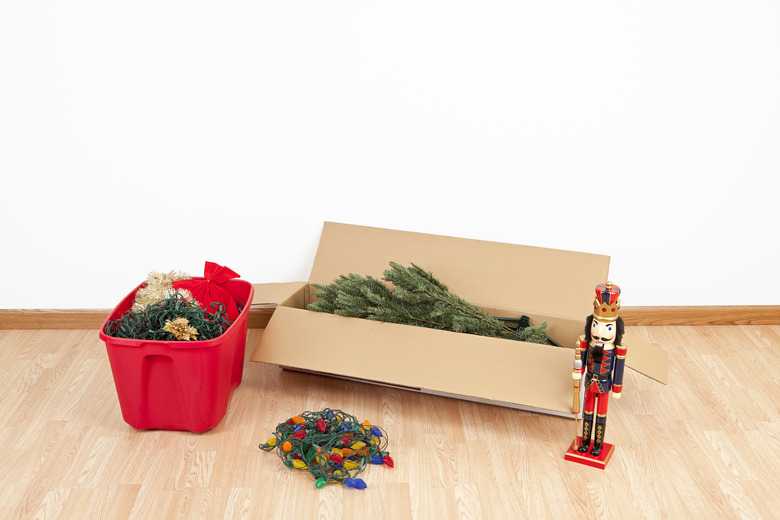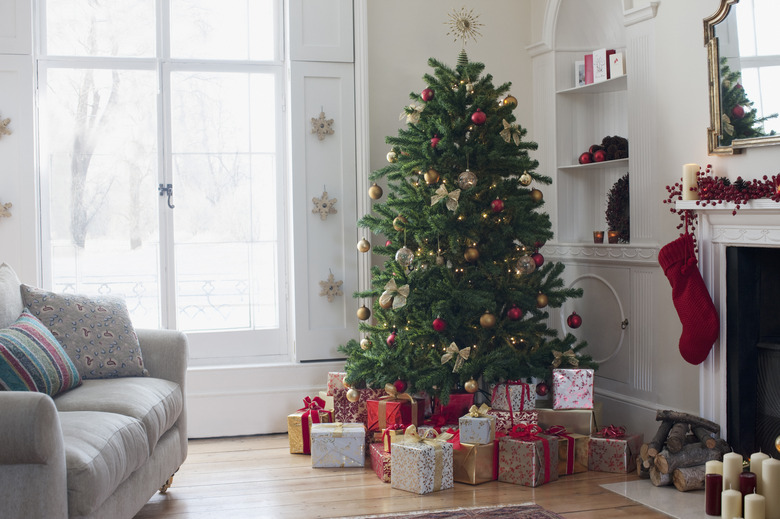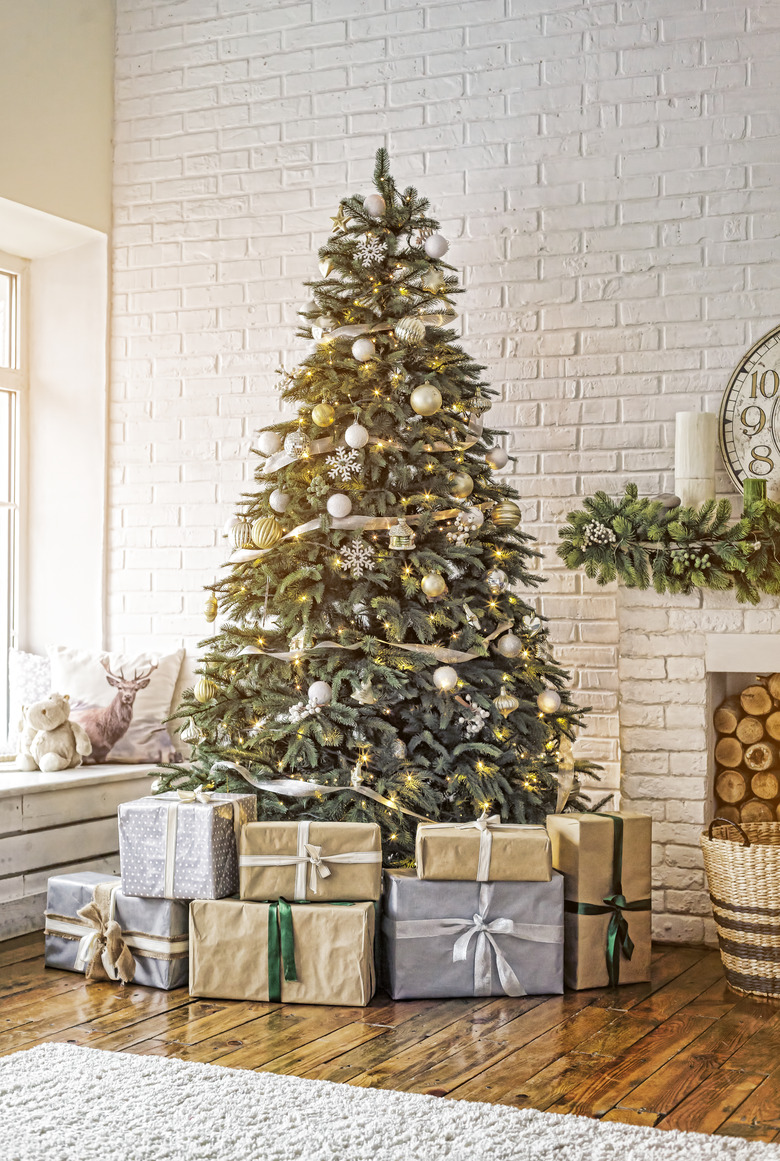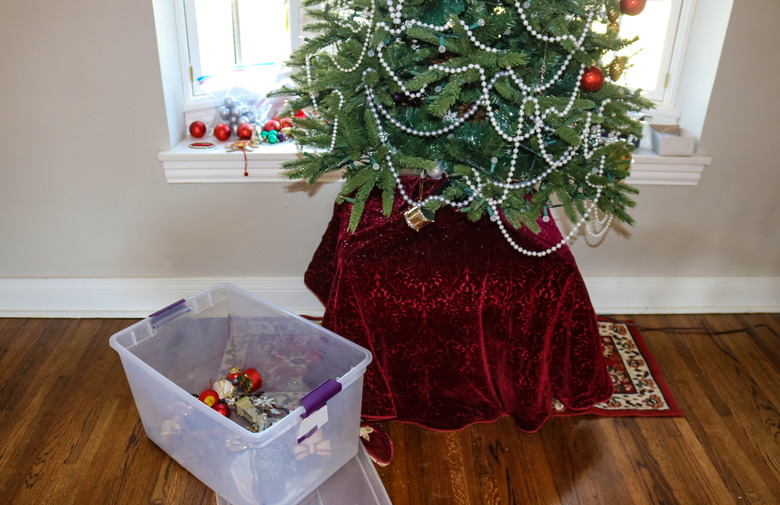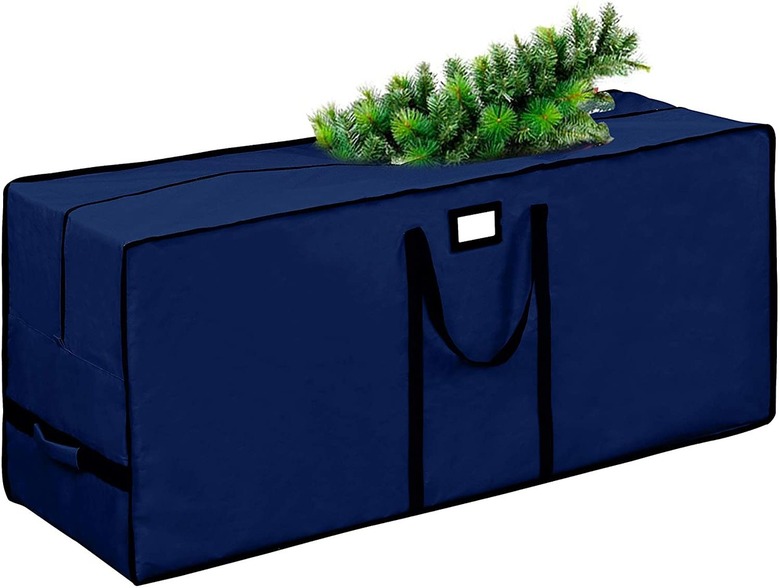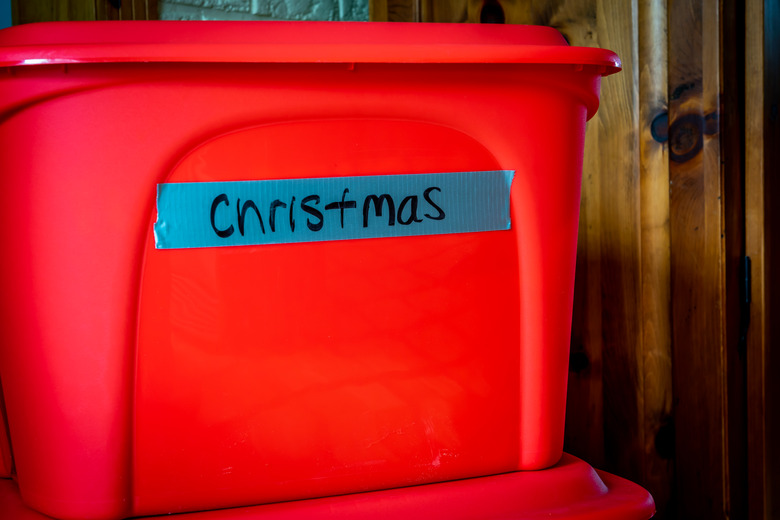How To Store An Artificial Christmas Tree
We may receive a commission on purchases made from links.
There's nothing quite like the magic of the holiday season, but glitter and good tidings don't happen by themselves — and creating your winter wonderland is a lot easier if you've stored your artificial Christmas tree in a way that left it neat, tidy, and easy to reassemble this year.
If you have attic or basement space as expansive as the North Pole, the best storage solution is to place your Christmas tree in a huge canvas or plastic bag that lets you store it fully assembled. Just slip the bag over or around the tree, zip it, and take it to storage. If you don't have the vertical room to store the tree assembled, you'll need to disassemble it before tucking it away. This may seem inconvenient, but reusing a nice artificial tree can save you a lot of money over a few years.
Packing away your artificial Christmas tree? Here are some of our best storage tips.
How to Choose the Right Storage Bag for Your Christmas Tree
How to Choose the Right Storage Bag for Your Christmas Tree
Putting away a Christmas tree is a lot like refolding a map or a sewing pattern. Once you've opened it, it will probably never again fit neatly into the original box it came in. Your best bet is to recycle the box and then store the tree in a high-quality storage bag during the off-season.
When it comes to tree storage bags, getting the right size is important. You should size your storage bag based on tree height as follows:
Christmas Tree Storage Bags By Tree Height
|
Bag Size |
Tree Height (in Feet) |
|
Small |
Under 6 |
|
Medium |
6 to 7.5 |
|
Large |
7.5 to 9 |
|
Extra Large |
Up to 9 |
|
Extra Extra Large |
9 to 15 |
You will also want to look at other bag features. Choose a thick polyester or cloth bag that won't rip or tear easily. Some bags feature wheels to help get the full bag into storage. Look for hefty handles as well so you can carry the tree more easily. Choose a waterproof or water-resistant storage bag so a roof leak, flooded basement, or other water issue doesn't ruin your tree.
Things Needed
-
Replacement light bulbs as needed
-
Twine or rope
-
Christmas tree storage bag or large duffel bag
-
Plastic tote or cardboard box
1. Check for Ornaments
1. Check for Ornaments
Take a thorough look at the tree to make sure that all the Christmas ornaments have been removed. Ornaments can be tricky to spot, so give yourself a day or two to examine the tree after taking down the holiday decorations. This will let you see the tree from many different angles and in different lighting.
2. Change the Bulbs
2. Change the Bulbs
If you have a pre-lit Christmas tree, plug it in and make sure all of the lights are working. Replace any burned-out bulbs to save time next Christmas.
Tip
If you run out of replacement bulbs, mark any burned-out bulbs clearly with brightly colored tape so you can find and replace them easily before you put the tree back up next year.
3. Disassemble the Tree
3. Disassemble the Tree
If your tree comes apart in sections, start at the top of the tree and lift each section off the one below it until the tree is completely disassembled. If you have a pre-lit tree, be careful to disconnect each section of Christmas lights as you go. Flatten each tree section for easier storage by gently pushing the branches up and in toward the center of the tree. If every tree branch comes off individually, bundle each color-coded section separately with a piece of twine to make reassembly easier.
4. Bag and Box
4. Bag and Box
Place each section of the tree into a tree storage bag. Start by putting the center pole into the bag, making sure the pointed end that goes into the tree stand is capped or facing the center of the bag so it doesn't rip a hole in the bottom of the bag. Then, place the stand itself in the bag, followed by the branches. Close the bag to keep out dust, dirt, and critters. For an extra layer of protection, you can place the sealed bag back in the tree box or in a plastic storage container.
Tip
- Consider washing your tree skirt and placing it in the tree bag to keep it clean.
- If your tree is heavy, a good storage option is to place the empty tree bag in a storage box and bring the pieces of the tree to the bag rather than filling the bag and then moving it. Consider buying a tree bag with wheels for easier maneuverability.
5. Store the Tree
5. Store the Tree
Store your tree away from direct sunlight. White, frosted, and flocked trees are especially sensitive to temperature and humidity. Store them in a dry area that remains a consistent temperature year-round, such as a finished basement, attic, or attached garage.
Store Your Tree Vertically If...
- You don't want to take it apart (or fluff it the following year)
- You wish to keep it decorated in storage
- Shelf or floor space is limited
Store Your Tree Horizontally If...
- You don't mind taking it down and setting it up each year
- You feel the tree is too heavy or bulky to maneuver in one piece
- You have adequate horizontal storage space
